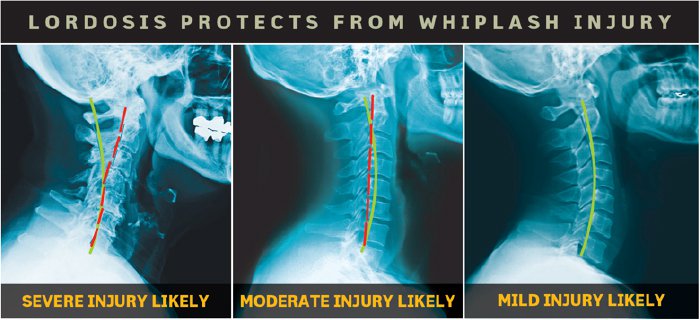In an age where we relish our independence and freedom, more and more people not only own a vehicle, but we're spending lots of time in them! Which means more car accidents! Whiplash is the most commonly reported injury from motor vehicle accidents, and they are on the rise. Today we are looking at some current literature on rear-end motor vehicle whiplash accidents and the associated disorders and injuries.
In The Journal of Orthopaedic and Sports Physical Therapy, a paper was published in 2016 titled "Whiplash associated disorders: occupant kinematics and neck morphology" (see link below). https://www.ncbi.nlm.nih.gov/pubmed/27690838. This paper is the culmination of thirty years of research and attempts to prevent whiplash injuries.
The term "whiplash" is often actually somewhat misused. This study states that it has been confused with the description of the symptomatology, when it’s actually the description of the type of injury. So when someone complains of whiplash, it’s actually whiplash associated disorders or WAD.
Let's talk about what happens to the head and neck with a whiplash injury. In the first phase, the head and upper neck move backward and flex downward, hyper-extending the lower neck and pushing the torso forward. This creates an unnatural S curve shape of the cervical spine which can injury the ligaments, tendons, muscles, joints, bones, and nerves. In the second phase, the head moves backwards behind the torso and the cervical spine, decelerating in cervical extension to the point that the joints in the cervical spine are taken to the limit of their ranges of motion and often slightly beyond. Finally, the head returns to what will now be its new normal positioning over the cervical spine as the momentum and force has left the body (See Figure 1 below). Whiplash is more common in females, or people with smaller neck bones and muscles because the size and thickness of the structures can actually prevent some of the injury components.
Preexisting conditions of the cervical curve (or lack thereof) can be somewhat of a predictor for injury during an accident. A "lordotic" or C-shaped cervical curve is important in handling stresses and traumas on the body as it acts like a shock absorber. However, if someone has a preexisting misaligned spine with either a straightening of the cervical curve or a kyphotic (backwards) curve, a whiplash type injury can create instability from the forces being displaced in a pathological pattern during the moment of the accident (see Figure 2 below). https://idealspine.com/your-neck-curvature-will-help-you-or-hurt-you-if-youre-involved-in-a-car-crash/
This paper gives a great synopsis of whiplash associated disorders. You can learn more about this paper by watching Dr. Evan's Facebook live video HERE. If you or someone you know has recently been in a rear end whiplash type accident then they could benefit from an assessment by an Upper Cervical Chiropractor. Meet our Upper Cervical Chiropractic partners, Arete Chiropractic at Dinner with Doc on Whiplash event September 27 at the Atlantic Grill in Rye, NH! A complimentary dinner is included. Reserve your seat today by calling the office at 603-380-9184 or by visiting their Facebook event page: https://www.facebook.com/events/303242203766079/
Figure 1
Figure 2


